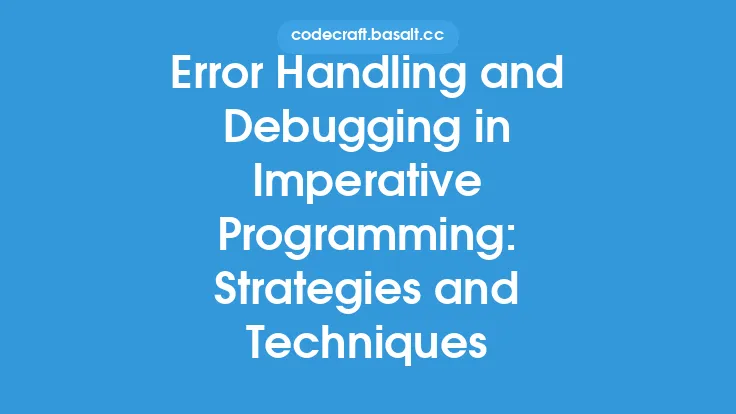Memory deallocation and garbage collection are crucial aspects of memory management in operating systems. When a program allocates memory, it is essential to ensure that the memory is properly deallocated when it is no longer needed to prevent memory leaks and optimize system performance. Memory deallocation refers to the process of freeing up allocated memory, while garbage collection is a technique used to automatically manage memory and eliminate memory leaks.
Introduction to Memory Deallocation
Memory deallocation is the process of releasing allocated memory back to the system. This is typically done when a program is finished using a block of memory or when the program terminates. There are several techniques used for memory deallocation, including explicit deallocation, where the programmer is responsible for freeing up allocated memory, and implicit deallocation, where the system automatically frees up memory when it is no longer needed. Explicit deallocation is typically used in languages such as C and C++, where the programmer has direct control over memory allocation and deallocation. Implicit deallocation, on the other hand, is used in languages such as Java and Python, where the system automatically manages memory.
Garbage Collection Techniques
Garbage collection is a technique used to automatically manage memory and eliminate memory leaks. It involves periodically scanning the heap for objects that are no longer referenced and reclaiming the memory occupied by those objects. There are several garbage collection techniques, including mark-and-sweep, generational collection, and incremental collection. Mark-and-sweep garbage collection involves marking all reachable objects and then sweeping the heap to reclaim the memory occupied by unreachable objects. Generational collection involves dividing the heap into generations based on object lifetimes and collecting garbage from each generation separately. Incremental collection involves collecting garbage in small increments, rather than all at once, to reduce pause times.
Reference Counting
Reference counting is a technique used to manage memory by keeping track of the number of references to an object. When the reference count reaches zero, the object is deallocated. Reference counting is simple to implement and provides fast deallocation, but it can be prone to memory leaks if there are circular references. A circular reference occurs when two or more objects reference each other, preventing the reference count from reaching zero. To avoid circular references, reference counting can be combined with other garbage collection techniques, such as mark-and-sweep.
Mark-and-Sweep Garbage Collection
Mark-and-sweep garbage collection is a technique used to identify reachable objects and reclaim the memory occupied by unreachable objects. The mark phase involves traversing the object graph and marking all reachable objects. The sweep phase involves scanning the heap and reclaiming the memory occupied by unmarked objects. Mark-and-sweep garbage collection is simple to implement and provides good performance, but it can be prone to pause times, especially for large heaps.
Generational Garbage Collection
Generational garbage collection is a technique used to divide the heap into generations based on object lifetimes. The heap is typically divided into three generations: young, old, and ancient. The young generation contains newly allocated objects, the old generation contains objects that have survived one or more garbage collections, and the ancient generation contains long-lived objects. Garbage collection is performed separately for each generation, with the young generation being collected most frequently. Generational garbage collection provides good performance and reduces pause times, but it can be complex to implement.
Incremental Garbage Collection
Incremental garbage collection is a technique used to collect garbage in small increments, rather than all at once. This approach reduces pause times and provides better responsiveness, especially for interactive applications. Incremental garbage collection involves interleaving garbage collection with application execution, with the garbage collector running in parallel with the application. Incremental garbage collection can be combined with other garbage collection techniques, such as mark-and-sweep and generational collection.
Concurrent Garbage Collection
Concurrent garbage collection is a technique used to collect garbage in parallel with application execution. This approach provides better responsiveness and reduces pause times, especially for multi-threaded applications. Concurrent garbage collection involves running the garbage collector in a separate thread, with the garbage collector periodically synchronizing with the application to ensure consistency. Concurrent garbage collection can be combined with other garbage collection techniques, such as mark-and-sweep and generational collection.
Real-Time Garbage Collection
Real-time garbage collection is a technique used to provide predictable and low-pause-time garbage collection for real-time systems. Real-time garbage collection involves using a combination of techniques, such as incremental collection, concurrent collection, and priority-based collection, to ensure that garbage collection does not interfere with the real-time constraints of the system. Real-time garbage collection is typically used in systems that require low latency and high responsiveness, such as embedded systems and robotics.
Conclusion
Memory deallocation and garbage collection are essential techniques used to manage memory and optimize system performance. There are several techniques used for memory deallocation, including explicit deallocation and implicit deallocation, and several garbage collection techniques, including mark-and-sweep, generational collection, and incremental collection. Each technique has its strengths and weaknesses, and the choice of technique depends on the specific requirements of the system. By understanding the different memory deallocation and garbage collection techniques, developers can write more efficient and effective code, and system administrators can optimize system performance and reduce memory-related issues.





